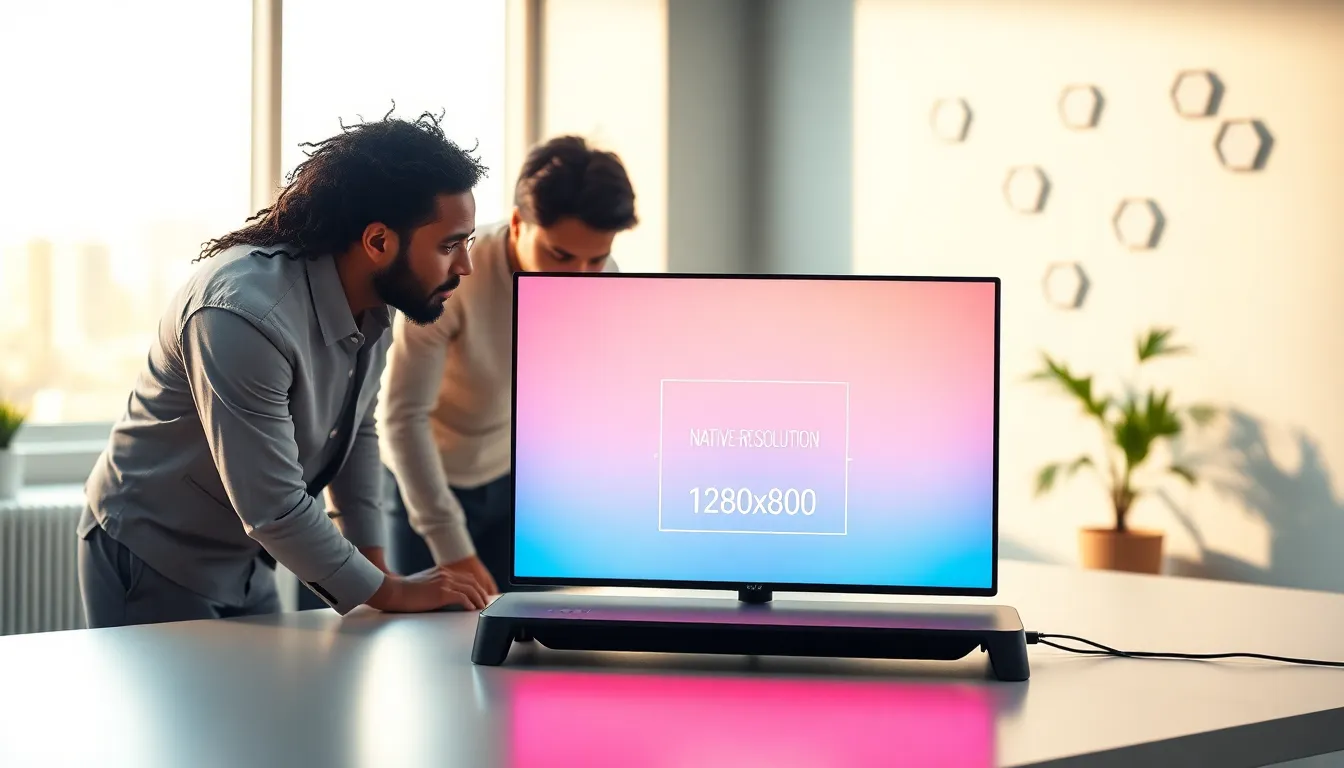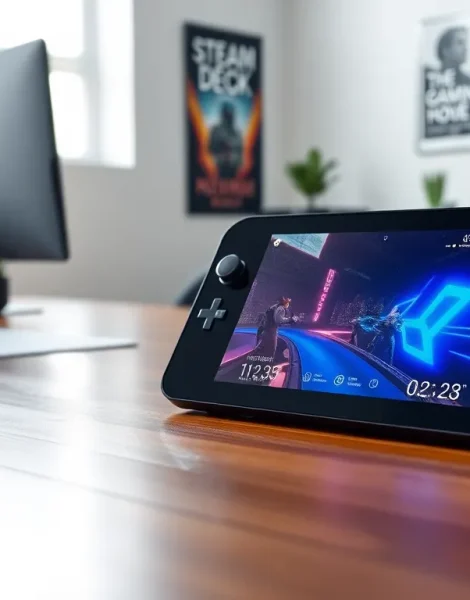When it comes to gaming, one term that keeps popping up is ‘native resolution.’ You might be wondering, what’s the big deal? Think of it as the comfy pair of shoes you wear while navigating through a virtual universe. Sure, you can squeeze into sandals, but your feet won’t thank you later. Similarly, gaming at the right native resolution means you get to enjoy crisp graphics and smooth gameplay on your Steam Deck, amplifying every sword clash and alien encounter. Let’s jump into the nitty-gritty of what native resolution is and how it significantly impacts your gaming experience.
Table of Contents
ToggleWhat Is Native Resolution?

Native resolution refers to the specific number of pixels displayed on a screen at any given time. This is often expressed as width x height, like 1280×800 or 1920×1080. The keen insight here is that native resolution represents the exact pixel count the display was designed to show. Think of it as the gold standard for how images and videos appear on your devices. When you set your Steam Deck to its native resolution, you’re ensuring that each pixel aligns perfectly with the image, resulting in sharper, clearer visuals. Navigating this sea of numbers can be a bit daunting, but remember, moving beyond your device’s native format often leads to undesirable effects. “Blur” is just the kind of word gamers do not want to associate with their crisp graphics.
How Does Native Resolution Affect Gaming?
The native resolution of your Steam Deck plays a crucial role in your gaming performance. Imagine playing your favorite game at a level that doesn’t match your actual display capability: it’s like trying to watch a blockbuster movie through a foggy window. You’re left squinting, trying to decipher what’s happening on-screen. Gaming at native resolution ensures that every graphical element, from textures to lighting, appears just as the developers intended.
Besides, native resolution impacts your in-game performance. Higher resolutions improve detail but can put a strain on your hardware, making your Steam Deck work overtime. It’s a delicate balance: you want stunning visuals without sacrificing frame rates. Achieving this balance unfolds as a sort of artistic dance, one where you’re fine-tuning settings while keeping an eye on your gaming experience. Hence, understanding native resolution is essential for gamers wishing to elevate their gameplay.
Steam Deck Specifications Overview
The Steam Deck boasts impressive specifications tailored to enhance your gaming journey. Its display measures a vibrant 7-inch LCD touchscreen with a native resolution of 1280×800 pixels, setting the stage for stunning graphics. This resolution means a pixel density just right for handheld gaming, balancing performance and visuals nicely.
Optimal Display Settings for Steam Deck
To maximize your gaming experience on the Steam Deck, adjusting display settings can make a world of difference. Enabling features like V-Sync or adaptive resolution can help maintain smooth gameplay, preventing unpleasant stuttering. The aim is to create harmonious conditions for immersive gaming.
Adjusting Resolution in Games
The Steam Deck allows users to adjust the resolution for individual games. This flexibility means that if a title demands more resources than your device can handle at native resolution, you can dial it back a notch. Finding that sweet spot between visual fidelity and performance requires a bit of trial and error, but it’s often well worth the effort.
Impact of Resolution on Performance
Resolution significantly affects not just visuals, but also overall performance. Gaming at higher resolutions requires more processing power, leading to potential frame rate drops. This is especially critical for fast-paced games where every millisecond counts: lag can make or break your experience.
The Steam Deck, while powerful, has limitations. Running a game at its native resolution with high graphical settings might lead to thermal throttling, slowing down performance. Conversely, downscaling the resolution can improve frame rates without sacrificing too much detail. Understanding how resolution affects performance allows gamers to make informed choices, ideal for maximizing the fun without getting caught in the frustrating spiral of lag.
Comparing Native Resolution to Upscaling
Upscaling is a technology used to enhance lower resolutions to fill higher-resolution screens, but it often comes at a cost. Unlike native resolution, which delivers truly startling graphics, upscaled images may appear less defined, introducing blurriness or artifacts.
While many games use techniques like dynamic resolution scaling or technologies such as DLSS (Deep Learning Super Sampling) to depict a better image than their source resolution might suggest, they still can’t hold a candle to purity. If your goal is pure, unadulterated gaming bliss, sticking to the native resolution is your best bet.
Tips for Achieving the Best Visual Experience on Steam Deck
- Understand Your Games: Not all games are created equal when it comes to resource demands. Researching their performance metrics can help you strategize your settings effectively.
- Adjust In-Game Settings: Fine-tuning graphics settings like texture quality, shadows, and effects can lead to improved performance while preserving visual integrity.
- Experiment with Resolution and Frame Rate: Finding the right balance that suits both your gaming style and the requirements of the specific game is essential.
- Use Thermal Management Wisely: Ensure your Steam Deck has proper ventilation and isn’t overheating, as thermal throttling can reduce performance drastically.
- Keep Software Updated: Regularly check for updates for both your games and your Steam Deck system for optimized compatibility.









